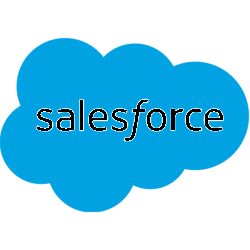Salesforce demonstrates strong business quality through impressive revenue growth, high cash flow generation, and innovative product offerings. The company is well-positioned in the market with significant growth prospects, particularly through its new Agentforce product. However, it faces challenges from foreign exchange fluctuations and the early adoption stage of its new offerings, which may impact short-term growth expectations.
Analysis Date: February 26, 2025
Last Updated: March 11, 2025
Trailing Twelve Months (TTM) values provide a view of the company's performance over the last year.
Graham Value Metrics
Benjamin Graham's value investing approach focuses on finding stocks with a significant margin of safety between their intrinsic value and market price.
Intrinsic Value
Estimated fair value based on Graham's formula
$248.78
Current Market Price: $241.26
IV/P Ratio: 1.03x (>1.0 indicates undervalued)
Margin of Safety
Gap between intrinsic value and market price
3.0%
Graham recommended a minimum of 20-30% margin of safety
Higher values indicate a greater potential discount to fair value
ROE: 10.458453930991418
ROA: 1.6594124047878127
Gross Profit Margin: 77.1922417205436
Net Profit Margin: 16.353080881382766
Trailing Twelve Months (TTM) values provide a view of the company's performance over the last year.
Strong Net Profit Margin
CRM's net profit margin of approximately 16.4% reflects solid profitability, indicating effective cost control and a strong business model.
Return on Equity Needs Improvement
While a return on equity of 10.46% is positive, it may lag behind industry benchmarks, suggesting there may be better investment opportunities available.
About Profitability Metrics
Profitability metrics measure a company's ability to generate earnings relative to its revenue, operating costs, and other relevant metrics. Higher values generally indicate better performance.
Return on Equity (ROE)
Measures how efficiently a company uses its equity to generate profits
10.46%
10%
15%
Higher values indicate better returns for shareholders
TTM (as of 2025-04-16)
Return on Assets (ROA)
Measures how efficiently a company uses its assets to generate profits
1.66%
3%
7%
Higher values indicate better asset utilization
TTM (as of 2025-04-16)
Gross Profit Margin
Percentage of revenue retained after accounting for cost of goods sold
77.19%
20%
40%
Higher values indicate better efficiency in production
TTM (as of 2025-04-16)
Net Profit Margin
Percentage of revenue retained after accounting for all expenses
16.35%
8%
15%
Higher values indicate better overall profitability
TTM (as of 2025-04-16)
Low Debt Levels
With a debt-to-equity ratio of 0.19 and debt-to-assets ratio of 0.11, CRM maintains a conservative capital structure, indicating lower financial risk.
Adequate Liquidity Ratios
The current ratio and quick ratio both around 1.06 suggest that CRM can cover its short-term liabilities comfortably.
Low Cash Ratio
A cash ratio of 0.32 indicates that while liquidity is adequate, the company may not have enough cash on hand to cover immediate liabilities, which could be a concern in times of financial strain.
About Financial Health Metrics
Financial health metrics assess a company's ability to meet its financial obligations and its overall financial stability.
Debt to Equity Ratio
Total debt divided by total equity
0.19x
1.0x
2.0x
Lower values indicate less financial leverage and risk
Less than 1.0 is conservative, 1.0-2.0 is moderate, >2.0 indicates high risk
Q4 2025
Current Ratio
Current assets divided by current liabilities
1.06x
1.0x
2.0x
Higher values indicate better short-term liquidity
Less than 1.0 is concerning, 1.0-2.0 is adequate, greater than 2.0 is good
Q4 2025


